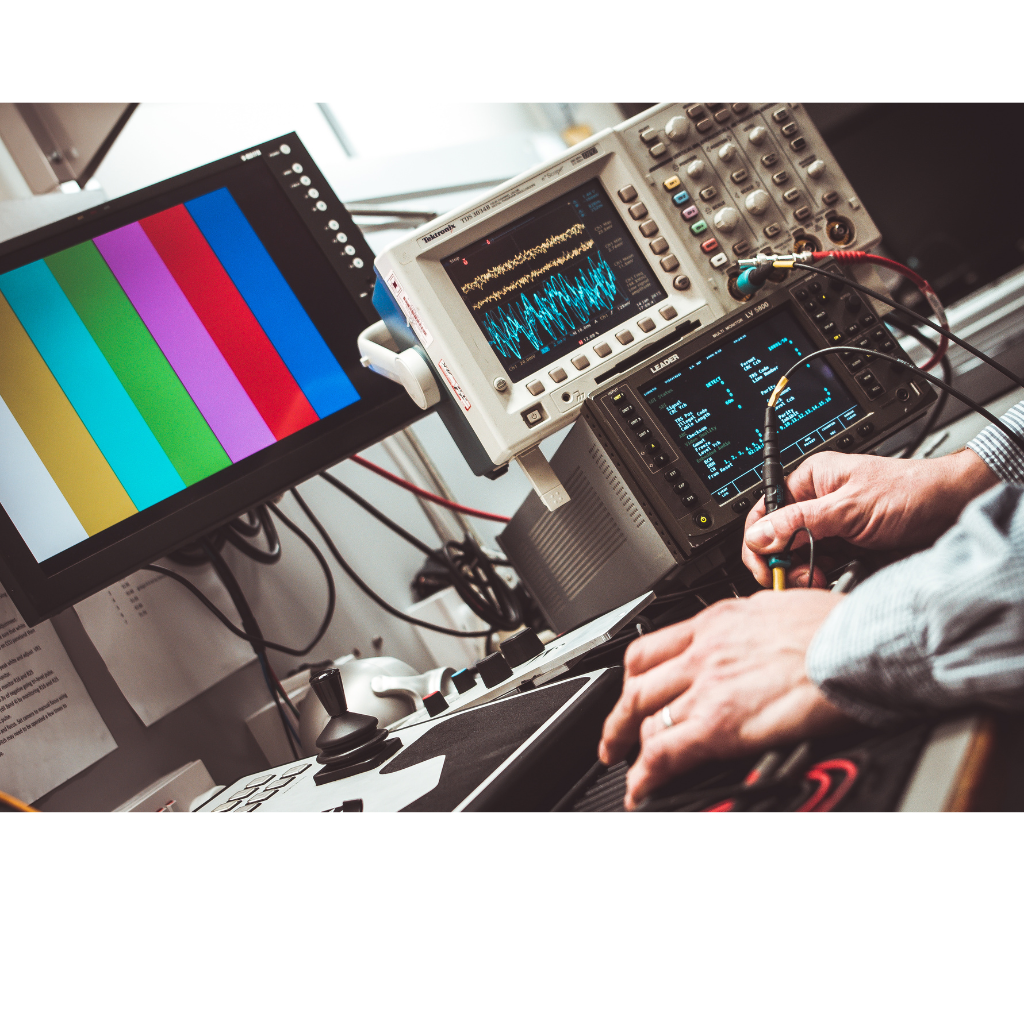Welcome to Prism Calibration, a premier provider of electronics instrument calibration services in India. Our team of professional technicians utilize cutting-edge equipment and techniques to guarantee your instruments are accurate, dependable, and meet industry standards.

Electronic instrument calibration involves adjusting and verifying instruments against a known standard to ensure they provide precise readings. This process is vital for maintaining the accuracy of instruments used to measure voltage, current, frequency, resistance, and more. Proper calibration ensures that devices remain compliant with industry standards like ISO 9001 and improve the reliability of processes across various sectors.
Key Benefits of Calibration:
Enhanced Accuracy: Calibration minimizes measurement errors.
Regulatory Compliance: Necessary for meeting industry regulations and standards.
Operational Efficiency: Accurate instruments lead to smoother operations and fewer interruptions.
Calibration is critical to ensuring that your instruments deliver correct readings. Miscalibrated devices can result in faulty data, leading to errors in product quality, safety risks, and regulatory non-compliance. In industries like healthcare, aviation, and manufacturing, even a small error in measurements can cause significant problems.
Reasons Why Calibration is Essential:
Proper calibration requires specific tools and equipment to ensure accuracy. These may include precision multimeters, signal generators, calibration software, and reference standards.
Essential Equipment for Calibration:
Reference Standards: These serve as benchmarks for accuracy.
Multifunction Calibrators: Devices capable of testing various parameters like voltage and current.
Environmental Controls: Instruments should be calibrated in controlled conditions to ensure accurate results.
Calibration Software: For automating and documenting the calibration process.
Connecting your electronics instrument for calibration requires careful attention to detail. Ensure that the correct adapters and connectors are used to avoid signal loss or errors during the process.
Steps to Connect an Instrument for Calibration:
Follow Manufacturer Instructions: Each instrument may have specific calibration requirements.
Before calibration, ensure the instrument is clean and placed in a stable environment with controlled temperature and humidity. This will help prevent external factors from affecting the calibration process.
Start by performing zero and span checks to assess the instrument’s baseline performance. These checks help determine if the instrument’s readings are within the acceptable range and provide a foundation for further adjustments.
Based on the zero and span checks, adjust the instrument to align with the specified standards. This step corrects any deviation in the instrument’s readings to bring it in line with industry standards or the reference equipment.
After making adjustments, verify the instrument’s readings by comparing them to the known standard. This ensures the calibration is accurate and that the instrument is now functioning correctly.
Document all calibration results, including any adjustments made and the final readings. Proper record-keeping is essential for future reference and compliance with industry standards or regulations.
By following these steps, you can ensure that your electronics instruments are calibrated accurately, providing reliable and consistent measurements.
Here are some expert tips to ensure your electronics instruments remain accurate between calibrations:
Use Proper Calibration Equipment: Always calibrate using certified and well-maintained equipment.
Choosing the right calibrator for your electronic instruments is key to ensuring accuracy and reliability. At Prism Calibration, we recommend starting by identifying your instrument’s specific calibration needs, such as measuring voltage, current, or resistance. For versatility, multifunction calibrators are ideal, as they allow you to handle multiple parameters in one device, saving time and effort.
If you require portability for fieldwork, opt for a lightweight, durable calibrator. It’s also essential to choose a calibrator that meets ISO or NIST standards to ensure regulatory compliance and traceability. For enhanced efficiency, consider calibrators that integrate with automation software, which helps streamline data management and reduces errors.
At Prism Calibration, we offer expert guidance to help you select a cost-effective calibrator that fits your needs while maintaining high precision and performance.
Proper calibration requires specific tools and equipment to ensure accuracy. These may include precision multimeters, signal generators, calibration software, and reference standards.
Essential Equipment for Calibration:
Reference Standards: These serve as benchmarks for accuracy.
Multifunction Calibrators: Devices capable of testing various parameters like voltage and current.
Environmental Controls: Instruments should be calibrated in controlled conditions to ensure accurate results.
Calibration Software: For automating and documenting the calibration process.

Multimeter Calibration: We calibrate digital multimeters, analog multimeters, and handheld multimeters to ensure accuracy and consistency.
Oscilloscope Calibration: Our technicians calibrate oscilloscopes of various types and brands to ensure they are functioning optimally.
Power Supply Calibration: We calibrate power supplies to make sure they are providing consistent and accurate output.
Signal Generator Calibration: We calibrate signal generators to verify the accuracy of their output and make sure they are operating within their specifications.
Frequency Counter Calibration: Our technicians calibrate frequency counters to ensure their accuracy and performance.
